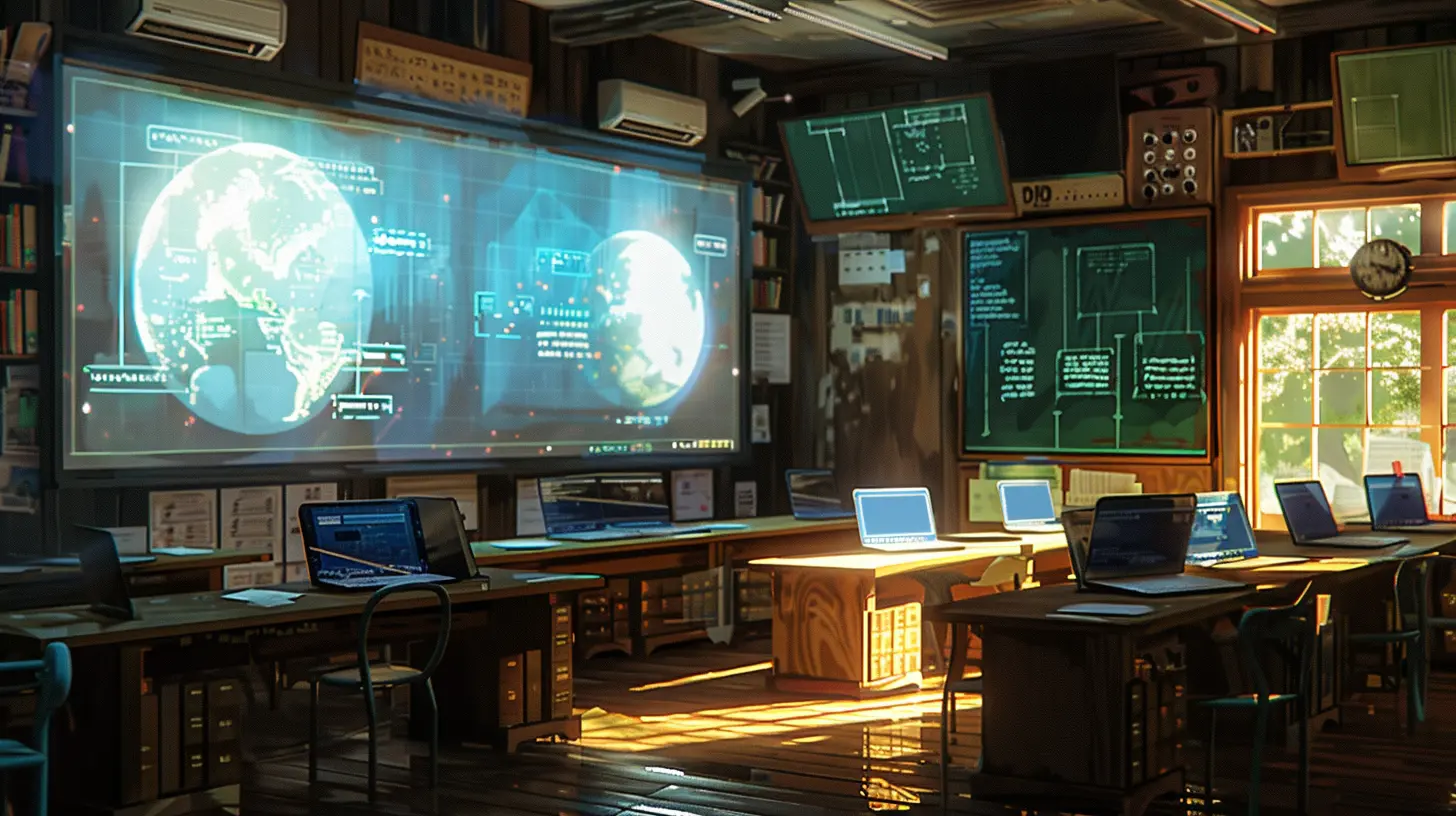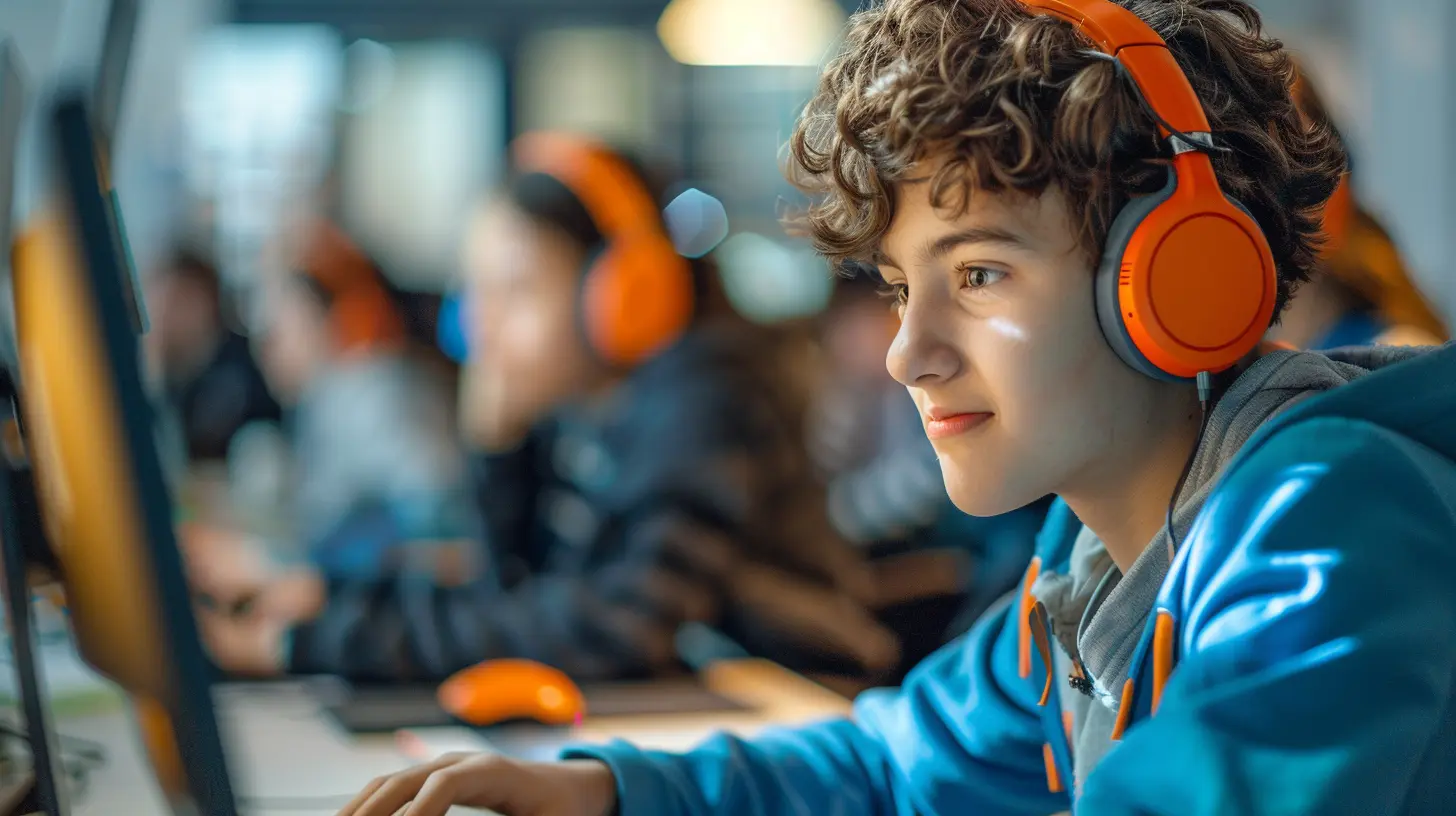The Impact of Virtual Classrooms on Student Collaboration
23 September 2025
In recent years, virtual classrooms have completely changed the way we learn. With technology advancing at lightning speed, online education is no longer just an alternative—it's becoming the mainstream. But there's one big question on everyone's mind: How does this shift affect student collaboration?
Collaboration is an essential part of learning. It helps students develop critical thinking, problem-solving skills, and teamwork—qualities that are valuable in both academics and real life. But does virtual learning improve or hinder this process? Let’s dive in! 
The Rise of Virtual Classrooms
Virtual classrooms have grown immensely, especially after the pandemic forced schools and colleges to shift online. Platforms like Zoom, Google Classroom, and Microsoft Teams became the new lecture halls, and students had to adapt quickly.While online learning started as a necessity, many institutions realized its potential. Now, it's not just an emergency backup plan; it's a major part of modern education. But with all its benefits, there are still concerns—especially when it comes to collaboration. 
How Virtual Classrooms Affect Student Collaboration
Collaboration is all about working together, sharing ideas, and learning from one another. Traditionally, students would meet in study groups, discuss projects face-to-face, and interact freely in classrooms. With virtual learning, things have changed. Let’s break down how virtual classrooms impact student collaboration.1. Increased Accessibility and Inclusivity
One of the biggest advantages of virtual learning is accessibility. Physical location is no longer a barrier—students from different cities or even countries can collaborate on projects. This creates a more diverse learning environment where different perspectives come together.Additionally, online learning can be more inclusive. Students who struggle with traditional classroom settings (due to anxiety, disabilities, or other challenges) may find it easier to participate in virtual discussions. This means more voices are heard, leading to richer conversations.
However, this inclusivity only works if the right tools and strategies are in place. Without proper engagement, some students may still feel left out.
2. Communication Challenges
Let’s be real—communicating online isn’t the same as chatting with classmates in person. In a physical classroom, students can easily exchange ideas, read body language, and clarify doubts in real time. In a virtual setting, things like lagging internet connections, muted microphones, and technical glitches can slow things down.Plus, some students may feel hesitant to speak up in virtual meetings, leading to a drop in engagement. While chat functions, discussion boards, and breakout rooms help, they don’t completely replace the natural flow of in-person discussions.
3. Collaboration Tools: A Game Changer
Thankfully, technology has stepped in to tackle collaboration challenges. With tools like:- Google Docs & Microsoft OneDrive (for real-time document editing)
- Trello & Asana (for project management)
- Slack & Discord (for communication beyond video calls)
- Miro & Jamboard (for virtual whiteboards and brainstorming)
Students can work together almost as effectively as they would in person. If used correctly, these tools can enhance collaboration rather than hinder it.
4. Flexibility: A Double-Edged Sword
One major perk of virtual classrooms is flexibility. Students can collaborate at their convenience rather than being restricted to classroom hours. This is great for those juggling multiple responsibilities like jobs or family commitments.However, this flexibility can also lead to procrastination and miscommunication. Without a set schedule, some students may delay their tasks or struggle to coordinate with their peers. Effective time management and clearly defined roles are essential to overcoming this challenge.
5. Reduced Social Interaction
Let’s be honest—one of the best parts of traditional classrooms is the social interaction. Whether it’s discussing an assignment over lunch or brainstorming ideas in study groups, these interactions help build relationships and teamwork skills.Virtual classrooms often lack this informal social element. Students may feel isolated, which can negatively impact group work. To counter this, educators need to promote virtual hangouts, team-building activities, and informal discussions to keep students connected. 
Can Virtual Classrooms Improve Student Collaboration?
Despite the challenges, virtual classrooms can actually enhance collaboration—if done right. Here’s how:1. Structured Group Activities
Instead of leaving students to figure things out on their own, instructors can design structured activities that encourage teamwork. Group projects, peer reviews, and discussion forums can help foster better collaboration.2. Encouraging Open Communication
Creating a supportive virtual environment where students feel comfortable speaking up is crucial. Instructors should encourage students to use discussion boards, video conferencing, and messaging apps to stay connected.3. Training Students on Digital Tools
Not all students are familiar with advanced collaboration tools. Providing short training sessions on how to use these platforms effectively can make a big difference in how well they work together.4. Regular Check-Ins & Feedback
Instructors should frequently check in with students to ensure they are engaging with their peers. Regular feedback sessions help keep everyone on track and provide opportunities for improvement.
The Future of Student Collaboration in a Digital World
With technology constantly evolving, the future of virtual collaboration looks promising. Virtual reality (VR) and augmented reality (AR) are already making their way into online education, offering immersive experiences that could bridge the gap between virtual and physical learning.Additionally, artificial intelligence (AI) is playing a bigger role in education, helping students personalize their learning experiences and collaborate more effectively. AI-powered chatbots, automated feedback tools, and smart content recommendations are just the beginning!
Conclusion
Virtual classrooms have undeniably reshaped student collaboration. While they come with certain challenges—like communication barriers and reduced social interaction—they also offer incredible advantages such as increased accessibility, flexibility, and innovative collaboration tools.The key to making virtual collaboration successful lies in using the right technology, encouraging open communication, and structuring group activities effectively. If institutions and educators take the right approach, virtual learning can enhance collaboration rather than hinder it.
So, is online learning a collaboration killer or a stepping stone to a more connected future? The answer depends on how we use it. With the right strategies, students can thrive in virtual classrooms just as well—if not better—than in traditional settings.
all images in this post were generated using AI tools
Category:
Virtual ClassroomsAuthor:

Zoe McKay
Discussion
rate this article
1 comments
Zariah Sawyer
Virtual classrooms have revolutionized learning, empowering students to collaborate in innovative ways. Embrace this opportunity to connect, share ideas, and grow together, regardless of distance. Let’s harness the power of technology to inspire creativity and foster a supportive community where every voice matters. The future of education is bright!
October 3, 2025 at 3:05 AM

Zoe McKay
Thank you for your insightful comment! I completely agree that virtual classrooms have transformed the educational landscape, enabling meaningful collaboration and connection among students. Together, we can make the most of this technological shift!


